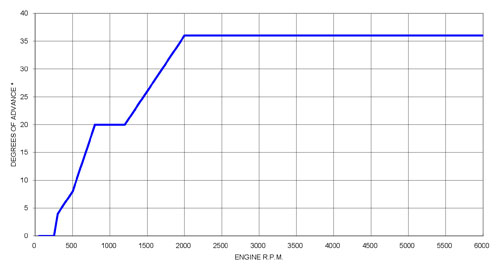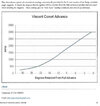First; you need to read the graph "backwards". At idle of 400 rpm its about 38 degrees retarded, and at 2,300 rpm is around 7 degrees retarded, so that means at 2,300 rpm the ignition is firing around 31 degrees BTDC, not 7! Once the revs reach 3,250 then the motor is firing at 38 BTDC, assuming the graph is correct.
Hi Martyn, On the BTH site, I cannot get the curve but this is mentioned directly above the invisible diagram "Below is a typical automatic electronic ignition advance curve supplied with your BT-H magneto." I am not sure if the diagram is therefore a Generic curve picked up from somewhere or the actual BTH Curve?
Does that mean that the effective ATD/ARD range on the BTH is around 38 degrees? And the data on the Lucas unit suggests its range is 35 degrees.
The Lucas info looks about spot on when one looks at the ignition settings suggested in the Riders handbook.
BUT I wonder about the BTH range of 38 degrees. Generally, if you set the fully retarded point to be after TDC then starting will be difficult. and my experience is if you set the fully advanced to 38 degrees or more you face a real risk of detonation which causes piston and bearing damage. I'm not saying that the BTH will do this - all I am questioning is the accuracy of the curve on the BTH web site.

 Hi
Hi